
ZuPaPa!
Platform: Neo Geo MVS (Arcade)
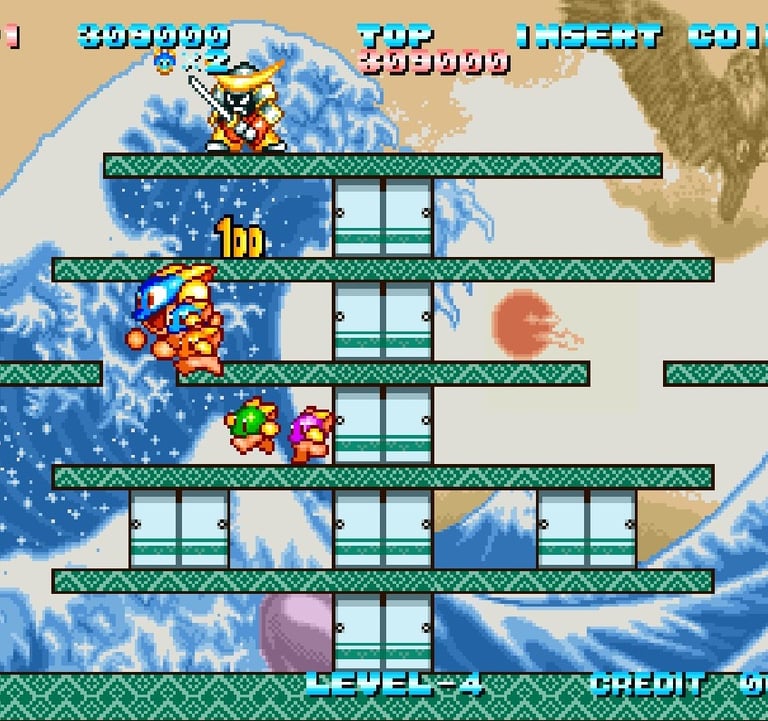



By the turn of the century, the single-screen platformer was heaving its final breaths. Games like Nightmare in the Dark (2000) or the oft-Bubble Bobble reimagining were the oddities, not the rule, to a time where 3-D (and scrolling graphics!) had just inherited the field. Being constrained to a 4:3 square was considered passe, even lame.
It's perhaps a miracle, then, that ZuPaPa! was ever released, and on a platform more associated with one-on-one fighters than old-style platformers. Originally developed by Face for a 1994 debut, the game fell into vaporware limbo until finally published by SNK come 2001. Why the company bothered to release a game that, even in 1994, would have seemed borderline anachronistic, remains unknown. But the game is good, really good, and maybe that’s all the convincing SNK needed.
Like most modern takes on the genre, the goal in ZuPaPa! is to run and jump around an assortment of stages, defeating baddies and grabbing items. Once the last foe has been disposed, the player advances to the next stage to repeat the process. It’s quite a journey; the game’s 42 levels comprise nine “Worlds” of vastly contrasting locales, from amusement parks to haunted caverns to even, apparently, a trip into cyberspace. It’s a thematic mess, but an ambitious one, with each area bearing unique enemies, backgrounds, and musical numbers. The aforementioned Nightmare in the Dark, by contrast, takes a more budget approach, reusing its minions and backdrops despite the lower number of stages.
But the game’s true appeal stems from its attack mechanics, which, gratefully, don’t follow the usual “bowling” formula. This time, it’s all about dog-piling—as the strangely-proportioned alien “Zupapa,” players must retrieve their miniature kin frolicking about the screen. These “Zooks,” four in all, can then be tossed at the marauding bad guys, trouncing them long enough for the player to make contact. A simple touch turns the tackled baddie into a circle of stars that radiate outward in a spinning ring, defeating anything caught within its radius. The more Zooks that latch onto a foe, the bigger this hoop becomes, drastically broadening the havoc it brings.
It’s not always so easy, however. The Zooks are usually separated when the level begins, forcing the player to sweep the screen, running after them while still dodging the already attacking monsters. Missing an enemy, or leaving one stunned for too long, also leaves the little tykes to wander freely—they're ammo with attitude, essentially. Fortunately, Zupapa can also punch enemies if otherwise defenseless, leaving them similarly stunned. Advanced players will learn to hurl their little herd first, then punch (to nudge) the dazed creature closer to other monsters, thus allowing for a greater chain-yielding blow. As stages get busier and meaner, mastering this three-step ballet of running, flinging, and tagging becomes crucial.
Bosses can be especially tricky, boasting unpredictable attacks that will seem unfair the first times through. Even so, they’re usually a delight to fight, with each beast being a fitting representation of its world. A Kabuki, for instance, fights for the Japanese stages, flinging sushi and dancing around, while a sentient crane/claw game attacks on behalf of the amusement park sector. If that wasn’t enough, each encounter sports its own unique musical score. Simple game or not, the high degree of thought and attention driven into this title is both obvious and considerable.
To help with the challenge, players can grab power-ups to enhance certain stats, including a buff that allows the alien to throw his four kiddos at once, making screen-cleaning much easier. This lends speed to an already fast game—indeed, it might be among the fastest-paced entries in the genre, with players encouraged to bound up and down platforms with surgical precision, flinging critters and spinning stars. In terms of sheer flash and breeziness, this is as close to Sonic the Hedgehog as a single-screen platformer can probably reach.
And it’s this speed, this zest—made doubly frenetic during co-op play—that will likely prove most appealing to the modern gamer. It’s a fast, fun, and intuitive experience that drops the stodginess sometimes associated with the genre. It’s also brimming with personality, with Zupapa, his two-player partner Zupipi, and his lively, duckling-esque sidekicks just pulsing with fervor. Bosses are likewise wacky and feel ripped right from a cartoon. And most importantly, the game finds an alternative to that tired Snow Bros. “roll-them-over” dynamic that’s almost become a groaning trope. It’s not a better mechanic, exactly, but it didn't need to be. It just had to be something else.
Leading up to ZuPaPa!’s release, SNK was nearing its end, closing down just a month later. It made little sense, perhaps, to spend that evaporating cash on a game that was, by no stretch, going to magically reverse the company’s fortunes. And yet, SNK released it anyway, almost brazenly. Defiantly.
Charitably?
One can only wonder what really happened. Did someone high in the company realize the game’s magic and, out of some sense of civic duty, and despite impending bankruptcy and closure, decide to grace the gaming public with what is one of the genre’s most resplendent gems? If so, what an amazing farewell gift for the fans!
And a fine, final hurrah for a genre long gone.--D
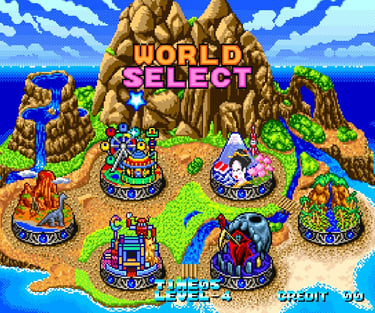

The player can choose which of the opening six worlds to play first.
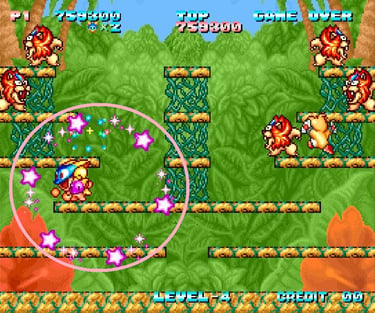


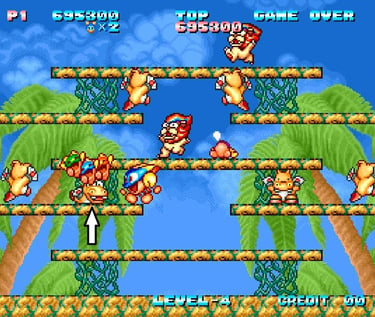
As shown by the arrow, enemies can be subdued by some well thrown Zooks. This allows Zupapa to then zoom right through, showering the critters into a lethal circle of stars. These sparks will proceed to nail other enemies, as marked by the circle below.

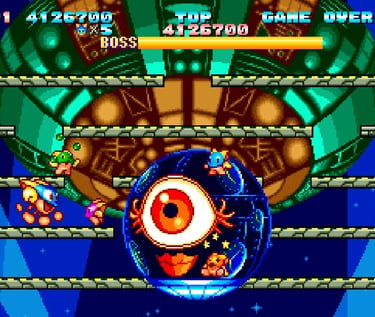
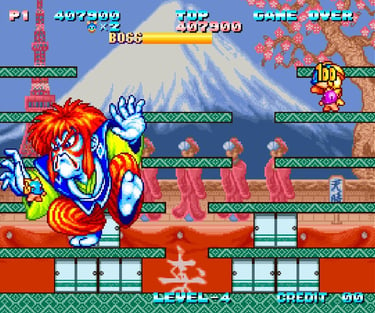

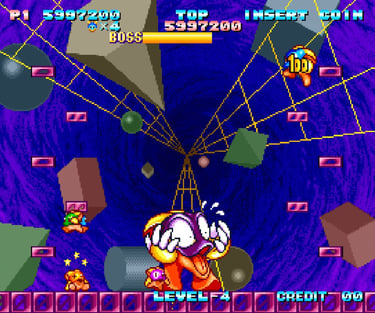

The game is brimming with some odd and wonderful boss encounters.
Publisher: SNK
Developer: Face
Release: September 2001
Genre: Single-screen Platformer
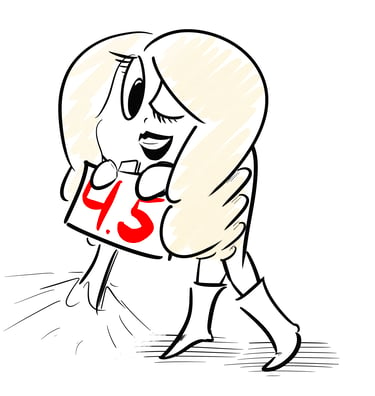

Contact: lostnostalgiaproductions@gmail.com
Website: www.lostnostalgia.com
Like what we're doing? Please consider throwing us a dollar into our Patreon page's tip jar!


